Black Widow FAQs
The black widow spider holds a special place in our psyche as the epitome of evil, because it's one of the most venomous creatures in America.
There are 34 species in the true widow group of spiders. In North America we mostly see the Southern black widow, the Northern black widow, and the one most of us think of first, the Western black widow.
Let's look at some of the common questions we get about these notorious spiders.
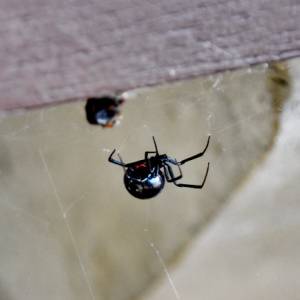
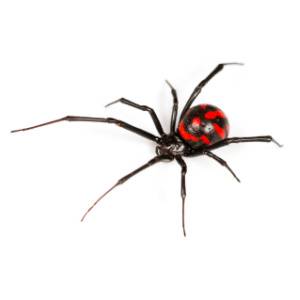
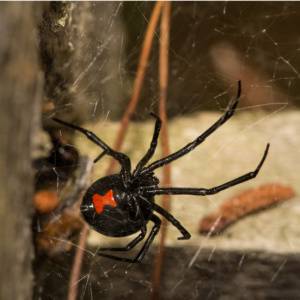
Do Black Widows Really Eat Their Mates?
Black widows are known to practice sexual cannibalism, though it is not a forgone outcome. Males try to choose their mate by determining if she has eaten or not; a well-fed female is less likely to attack her mate. Her web contains a scent which clues him in if she has recently eaten.
These spiders are nocturnal. Males travel to find females. Females stay near their web, defending it and attacking when food lands. When threatened they use an escape string and flee. If running is impossible they most often play dead, only biting when pressed to skin or when their eggs are threatened.
Are Black Widow Spiders Dangerous?
With its shiny black body and red hour glass marking on the underside of the abdomen, this is the image which inspires so much fear.
The black widow spider is one of three spider species in North America with a medically significant bite, the other two being the brown recluse and Chilean recluse.
They are generally shy and bite when threatened or pressed against the skin. Unlike the recluse species, the bite is venomous rather than necrotic.
How Can I Tell if it's a Black Widow?
Black widow spiders young start off-white or gray and grow darker with every molting.
Females are generally shiny black with the familiar red hourglass on the underside of their abdomen. They may have red stripes and dots instead.
Males are dark brown to black with red, yellow, or white dots and stripes on the back. Some species are dark brown and may have white or yellow markings on the underside. These often have red legs.
Other ways to know if you are dealing with a widow is the bulbus abdomen and long spindly legs, particularly the front two legs. Adults measure 1 to 1.5 inches.
Their webs are irregular and tangled like messy cobwebs from which they hang upside down waiting for their prey.
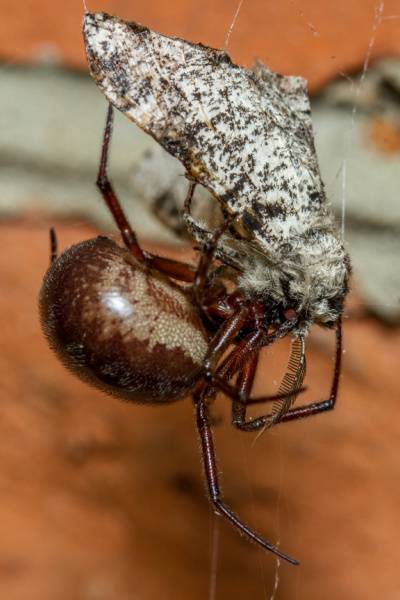
Spider Control Services Near You
Get a Croach® pest exterminator near:
- Seattle (including Mukilteo, Sumner, Kirkland, Tacoma, Mount Vernon) and Tri-Cities, Washington.
- Spokane, Post Falls, Kooskia, Lewiston, and Boise, Idaho.
- Portland, Beaverton, Oregon.
- Denver, Aurora, Colorado.
- Columbia and Greenville, South Carolina.
- Charlotte, North Carolina
- Salt Lake City, Sandy, Utah.
Where Do Black Widows Nest?
Although black widow spiders prefer warm climates, they are found throughout the United States. They prefer to live near the ground, choosing small holes and cracks to build their webs.
They're often found in the basement of buildings. Some live in small, abandoned animal burrows.
They create webs of irregular, sticky, tangled silk. The web catches insects, which the spider wraps up, liquefies and devours. Egg sacs on the web are teardrop-shaped.
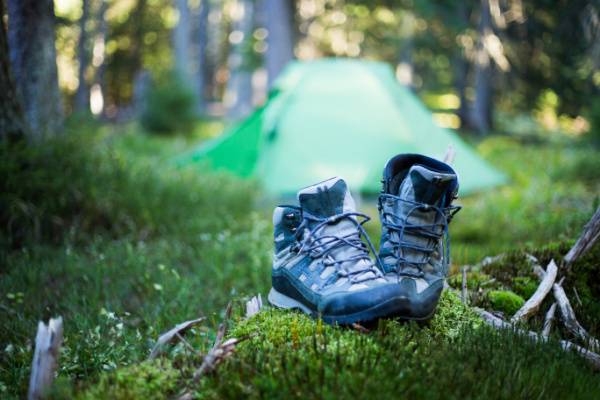
Black widows spin their webs in dark, quiet spaces near the ground. Yes, they tend to be in spaces where you reach in without looking, under sinks, in basements, under your deck, and the dark reaches of your garage.
Outside, we commonly find them living in wood piles, thick brush, and sprinkler valve boxes.
Experts caution people to tap and shake out their footwear before putting them on. Infrequently worn shoes or boots left outside make an attractive home for spiders.
Do Black Widows Kill Humans?
People rarely die from the bite of a black widow. If you get bit, wash the area with soap and water and seek medical attention as they have extremely powerful venom which can make you very sick.
The severity of a female bite depends on age and physical condition of the victim, and how much venom, if any, the spider injects. Dry or low venom bites have little to no pain and may leave fang marks.
A venomous bite begins with acute, local pain and red skin. It may include systemic effects, including severe muscle pain, abdominal cramps, extreme sweating, increased heart rate, elevated blood pressure, muscle spasms, and trouble breathing. Bites are rarely fatal, and are most dangerous to children.
Treatment
Children and the elderly who are bitten need immediate medical attention. Anyone else experiencing more than localized pain should seek medical attention. If in doubt, see your doctor. Transport children by EMTs to monitor health in transit.
How Do I Prevent Black Widows in My Home?
Your best defense is professional pest control.
We use eco-friendly Integrated Pest Management (IPM) strategies to rid your home of spiders, break the breeding cycle, and exclusion to prevent them from returning.
When chemical extermination is called for, the products we use at Croach® are more powerful than what is available at the home center.
Our technicians are trained on the proper use and must be licensed through the State to ensure proper application methods.

Croach® Spider Control
Spider control includes:
- Inspection with individualized plan and proposal.
- Initial treatment to remove webs and sacs, and eliminate existing spiders, including interior spaces.
- First regular treatment thirty days later to disrupt egg cycle and eliminate remaining spiders.
- Regular treatments to apply product and remove webs, frequency dependent on severity.
- Complimentary retreats when necessary.
- Interior treatments upon request (call if you see a black widow spider).
Croach® pest control technicians also exterminate yellow sac and hobo spiders frequently. Ready to get rid of spiders in your home?
Request a free inspection and begin services for treatment, control, and removal of black widow spiders on your property.
Free Pest Inspection